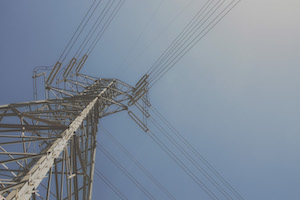KDKA radio shared — and made — history for the people of Pittsburgh
As America’s domestic industry transitioned from wartime to peacetime production following World War I, Westinghouse Electric and Manufacturing Company engineers were looking for a new application of the radio technology they had developed for military use.
Wartime radio had been short-range, often point-to-point communication with bulky equipment. Now, with an eye toward broader appeal, Westinghouse engineers envisioned broadcasts that could reach many individuals with a variety of programming.
Westinghouse invited radio entrepreneur Dr. Frank Conrad to run with the idea, and by election day, Nov. 2, 1920, a newly minted KDKA made the nation's first commercial broadcast, announcing the unfolding results of a presidential election that brought Ohio newspaper publisher and politician Warren G. Harding to the White House.
“At the Westinghouse Electric and Manufacturing Company, while life made merry and loose, sober men were advancing the real future,” KDKA television pioneer Edward J. Young later wrote of the station’s debut in the “Roaring 20s.”
It was, indeed, perfect timing: the nation was enjoying a surge of postwar optimism, a love of technology and some extra money and time on their hands.
Perfect for an afternoon of radio.
While some have argued that other stations could lay claim to the “first” title, Young would disagree, noting the difference between early “experimental” stations and those designed for regular broadcast.
“Look to Herbert Hoover’s Department of Commerce for the order of licensing,” he wrote in a 1993 memoir, in defense of his hometown station. “As you would suspect, KDKA, Pittsburgh is the first listing.”
KDKA’s call letters were not symbolic. Instead, they were assigned at random from a list of call letters intended for ocean vessels.
Its programming, on the other hand, was carefully crafted to match the interests and values of the audience.
Young credits Westinghouse vice president Harry Phillips Davis — whom he dubbed the “Father of Radio” — for setting the “standards of decorum” for KDKA. Davis had insisted that “nothing must offend since by radio you were the guest in the home of the listener.”
KDKA’s broadcasts of the 1920s and 1930s presented a smorgasbord of content characterized by “a parade of personalities, events and anecdotes” that included news, sports, poetry, book reviews, stunts, cooking, shopping, music, religious services, drama and network shows.
Live music added notable flair to the airwaves.
By the 1940s, KDKA employed a staff orchestra that played for shows and performed original arrangements of the latest music. Pittsburgh-area listeners could also hear performances by local musicians and by prominent national figures such as Betty White, Mel Torme and humorist Will Rogers.
Outside of the studio, remote broadcasts presented a unique set of challenges, particularly in accommodating the acoustics of various venues and preparing for inclement weather. Over time, engineers provided the latest in swing and classical music from amusement park dance halls, ballrooms, theaters and venues like the William Penn Hotel, where ensembles performed for lunchtime diners.
KDKA provided innovative original programming on a range of subjects of interest to its listeners. Some fan-favorites included “The Home Forum,” directed by Evelyn Gardner; the “Farm Hour” with Homer Martz; and “Brunch with Bill,” an early talk show format featuring host Bill Hinds and guests. The “Uncle Ed Shaughency Show,” launched in 1932, continued until 1980.
Long before Pittsburgh was dubbed a “city of champions,” KDKA brought legendary sports events to its listeners.
On Aug. 5, 1921, KDKA was the first radio station to broadcast a major league professional baseball game: a Keystone State matchup between the Pittsburgh Pirates and the Philadelphia Phillies at Forbes Field in Oakland. Fortunately for the record books, the Buccos came away with an 8-5 victory.
Even more memorable, KDKA broadcast the team’s legendary 1960 World Series 10-9 win over the New York Yankees with Bill Mazeroski’s dramatic Game 7, ninth-inning walk-off home run.
KDKA continued to be a regular guest in the homes of Pittsburgh-area listeners through the 1950s, the industrial downturn of the 1970s and 1980s, and beyond.
Its programming evolved to include Rock-n-Roll, expanded daytime and nighttime talk shows, and expansive, award-winning local news reporting. And for many years, from front porches and garages of Lawrenceville, the South Side and many other communities in the region, Pittsburghers tuned in to KDKA for their Pittsburgh Pirates games.
The station’s catchy jingle, “K-D-K-A, Pitts-burgh,” is unreproducible in print but seared into the minds of Pittsburgh-area residents who may also remember broadcasting icons whose careers were forged on the KDKA airwaves: Eleanor Schano, John Cigna, Fred Honsberger, sportscaster Bob “The Gunner” Prince, Mike Pintek and many more.
As in the past, the station is still the home of innovative Pittsburgh-first programming.
Katrina Jesick Quinn is a faculty member at Slippery Rock University. She is an editor of “From the Arctic to the Orient: Adventure Journalism in the Gilded Age” (McFarland) and “The Civil War Soldier and the Press” (Routledge).













